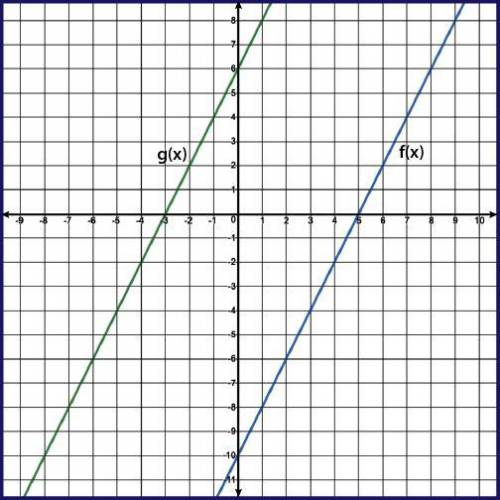
Engineering, 06.05.2020 08:16 tjjjjjjjjjjjjjjjjjjj
The linear functions f(x) and g(x) are represented on the graph, where g(x) is a transformation of f(x):
A graph with two linear functions; f of x passes through 5, 0 and 10, 10, and g of x passes through negative 3, 0 and 2, 10.
Part A: Describe two types of transformations that can be used to transform f(x) to g(x). (2 points)
Part B: Solve for k in each type of transformation. (4 points)
Part C: Write an equation for each type of transformation that can be used to transform f(x) to g(x). (4 points)


Answers: 1


Another question on Engineering

Engineering, 04.07.2019 18:10
Ahot wire operates at a temperature of 200°c while the air temperature is 20°c. the hot wire element is a tungsten wire of 5 um diameter and 2 mm in length. plot using excel current, heat transfer and heat generated by the wire for air velocity varying from 1-10 m/s in steps of lm/s? matlab the sensor voltage output, resistance, or assume nu 0.989 re033pr13 take air properties at tr (200°c20°c)/2 = 110°c properties of tungsten: c 0.13 kj/kg.k 3 p 19250 kg/m k (thermal conductivity) = 174 w/m.k
Answers: 2

Engineering, 04.07.2019 18:20
Determine the damped natural frequencies and the steady state response of a decoupled damped forced two degrees of freedom system. 10ä1 + 2q1 20q1 10 cos t; 10q2 +4q2 + 40q2 10 cos t
Answers: 3

Engineering, 04.07.2019 19:10
Starting wih an energy balance on a rectangular volume element, derive the one- dimensional transient heat conduction equation for a plane wall with constant thermal conductivity and no heat generation.
Answers: 1

Engineering, 04.07.2019 19:20
At steady state, air at 200 kpa, 325 k, and mass flow rate of 0.5 kg/s enters an insulated duct having differing inlet and exit cross-sectional areas. the inlet cross-sectional area is 6 cm2. at the duct exit, the pressure of the air is 100 kpa and the velocity is 250 m/s. neglecting potential energy effects and modeling air as an 1.008 kj/kg k, determine ideal gas with constant cp = (a) the velocity of the air at the inlet, in m/s. (b) the temperature of the air at the exit, in k. (c) the exit cross-sectional area, in cm2
Answers: 2
You know the right answer?
The linear functions f(x) and g(x) are represented on the graph, where g(x) is a transformation of f...
Questions



English, 22.05.2021 05:20



Social Studies, 22.05.2021 05:20

Biology, 22.05.2021 05:20

Mathematics, 22.05.2021 05:20

Mathematics, 22.05.2021 05:20



Chemistry, 22.05.2021 05:20

History, 22.05.2021 05:20

Mathematics, 22.05.2021 05:20


Mathematics, 22.05.2021 05:20

Mathematics, 22.05.2021 05:20

Mathematics, 22.05.2021 05:20


Computers and Technology, 22.05.2021 05:20



